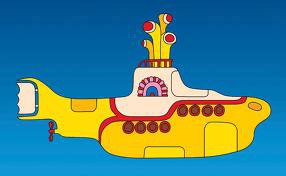Promising Escape Options Include Deep Caves, Nuclear Submarines


The BBC asks: where is there not internet?
The primary mechanisms for getting online are wired connections, mobile networks and satellites. Fibre-optic cables make up the core of the internet, criss-crossing oceans and land. The first of those communications cables were put down in the 1850s for carrying telegraph signals. Today they connect all continents except Antarctica, and include many — but not all — small island nations.
Mobile connections, meanwhile, rely on cell phone towers. And these can have an impressive reach. “Two years ago I was in the Sahara, and for quite a large amount of time I had access,” Graham-Cumming says.
There are also satellite connections, balloon connections, mobile radio connections. The only places that are unreachable by current technology are:
Deep caves like Georgia’s Krubera Cave, which reaches 5,610 feet (1,710m) underground, for one — it’s the deepest cave on Earth.
Also:
“I bet a nuclear submarine has really rubbish access,” Graham-Cumming speculates.
Which will you choose at the end?